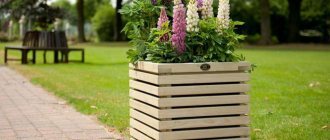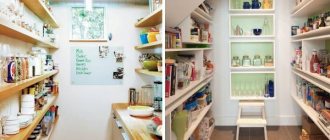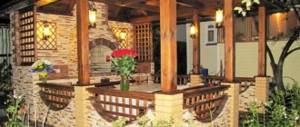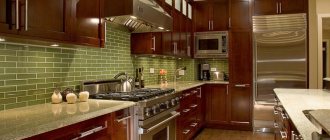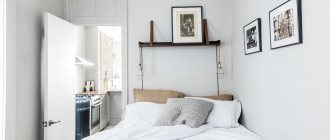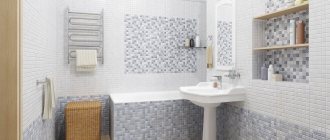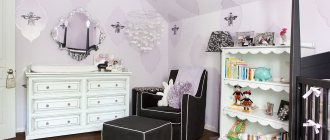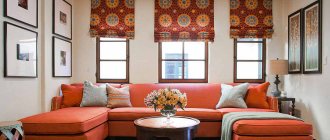Why does the lining need to be painted?
Proper treatment of walls will protect the surface from mold, damage by insects, and damage to the appearance from exposure to high humidity.
Unpainted wood darkens and loses its attractiveness. With changes in temperature and humidity, wood tends to swell or shrink when exposed to dry air. Surface protection of the lining is carried out to preserve its appearance for a long time. It is better to treat the wood initially, since restoring the original shade of the untreated material will then be difficult or almost impossible.
Wood coloring products
There are many paints and mixtures for treating wood surfaces. To decide what is the best way to paint the lining inside the house, consider the properties of various types of coatings.
Means for processing lining inside the house are divided into two types:
- to protect against the ingress and proliferation of microorganisms, mold, insects, various atmospheric influences, and decay processes;
- protective and decorative coatings.
Protective:
- antiseptics, primers, impregnations;
Protective and decorative:
- various paints, varnishes, enamels.
How to paint lining inside a house - step-by-step diagram
Step 1: Cleaning the surface of the lining
The first stage is cleaning and bleaching the lining. The surface of the boards must be cleaned of dirt; this can be done using a steel or hair brush. The boards also need to be sanded with fine sandpaper to remove all roughness. In order to remove deep stains, such as fungal stains, you need to resort to special bleaching agents. The end result should be a clean, smooth and dry board.
Step 2: Prime the Wood
The primer should completely fill the pores of the surface and not sag further when drying. It is selected depending on the type of wood from which the lining is made. The primer can be applied with a paint roller or sprayer.
Step 3: Impregnation of the lining surface
Before painting the lining inside the house, it should be treated with a special impregnation. Wood impregnations have an antiseptic effect and prevent the appearance of mold, fungi and insects. You need to saturate the board on both sides, and then let it dry thoroughly (at least two days). High-quality products do not change the color of the lining and do not emit an unpleasant odor during operation.
The primer for indoor work must be water-based and not have a strong, unpleasant odor.
Types of protective and decorative paints
You can coat the lining inside the house with oil, acrylic, and alkyd paints to give it an aesthetic appearance. The best way to paint the lining must be decided individually, depending on personal preferences.
Oil paints
Oil paint for lining
Painting work should be carried out in dry weather so that the room can be well ventilated.
Advantages:
- has a service life of up to five years without loss of shine;
- protects well from moisture;
- dries within 24 hours;
- perfectly absorbed into the wood surface;
- low cost.
Flaws:
- pungent toxic odor;
- when painting, it is necessary to protect the respiratory system with a respirator;
- a surface coated with oil-based paint does not “breathe”, which can lead to cracking of the material;
- after prolonged use the surface loses its shine;
- No other coating is applied on top of oil paint.
Acrylic paints
Acrylic paint is the most popular for painting lining. It is made from a mixture of water and acrylates.
Acrylic paint for lining
Advantages:
- environmental cleanliness;
- protects the material from moisture;
- the surface “breathes”;
- short drying time, does not create streaks;
- has no pungent odor;
- solvents are water and alcohol;
- frost-resistant;
- retains its original appearance throughout the entire period of use.
Flaws:
- cheap paints may change color after drying;
- long duration of the surface treatment process - you need to carefully apply a thin layer, wait until it dries, and only then apply the next one.
Alkyd paints
Alkyd compositions are suitable for covering not only walls, but also floors. It is recommended to apply only to a dry surface, otherwise the coloring composition will bubble and peel off after drying.
Advantages:
- low cost;
- moisture resistance.
Other types of compounds
Wax for lining
Transparent decorative glaze can highlight the texture of wood. To give it any shade, a corresponding pigment is added - color.
To give the lining a noble shine, a wax composition is used that is absorbed into the wood. To secure the layer on top, you can apply varnish.
Opaque enamels completely paint over the structure of the material - they are applied in three layers to a dry surface.
How to paint the lining inside the house must be chosen based on personal preferences, the desire to preserve the natural color of the wood, and partially or completely repaint it to match the interior of the room.
Painting lining inside the house: the purpose and necessity of this event
Lining is a thin board that is used for covering various surfaces: walls, ceilings, doors, both indoors and outdoors. This is a wooden panel, which is the main advantage, since wood is a valuable and environmentally friendly building material. Also, lining is an excellent decorative element that can give comfort and a special atmosphere to the house.
A lot can be said about the advantages of lining as a finishing material. This includes the ability for heat and sound insulation, the ability to visually smooth out surface defects, durability and ease of installation. In general, it retains all the properties of wood. And wood, as you know, burns well, rots, and is attacked by fungi and insects. But this can be easily avoided with proper care and use.
Painting lining inside and outside the house is one of the elements of competent wood care. A protective layer of paint and varnish composition protects the wood from environmental influences: moisture, insects, dust. Also, the purpose of painting can be to change the color if the natural one is not suitable for some reason. Or vice versa - varnishing to more intensely highlight the natural wood structure. After any of these treatments, you can safely wet clean surfaces.
The specialists of the site REMOSKOP.RU have prepared for you a special calculator Calculation of lining . You can easily calculate the required amount of lining.
Lining is a durable material, but over time it loses its color when exposed to sunlight. And there is no point in decorating a house with wood for the next 20–30 years if its decorative properties are lost in the first decade. Painting will also help in this case. A layer of varnish or paint will protect the boards from the sun and “preserve” the original color for many years.
Decorative varnishes
How to cover the lining indoors to preserve the structure of the wood? To preserve the magnificent original appearance, the lining is varnished.
There are many types of varnishes:
- polyurethane varnishes protect the lining from various influences, for example, from yellowing and ultraviolet radiation;
- acrylic-polyurethane, suitable for rooms located on the sunny side, are not subject to fading, are used in baths, bathrooms, and have excellent water-repellent properties;
- water-based - environmentally friendly varnishes;
- alkyd varnishes, used to cover floors and walls, are abrasion resistant, used for interior and exterior work;
- restoring varnish with bleach based on chlorine and oxygen will look beautiful, but the restored appearance of the board surface may be partially destroyed due to exposure to aggressive bleach;
- water-based acrylic - available in matte and glossy, used to cover indoor walls, completely safe for human health, will not harm allergy sufferers;
- Aqualak is well suited for covering floors and ceilings; it is colorless, strong and durable;
- Wood stains for lining are used on surfaces without defects and discolor the wood.
Varnish coatings can be toxic
How to paint the lining?
To color shalevka, different types of paints, varnishes, and aqualas are used. Interior spaces are most often painted with scuba paints, and exterior spaces are often painted with paints and synthetic varnishes, but another solution may be chosen. The same white paint, due to the fact that it dries quickly, can be used for painting indoors. Water-based paints do not have good performance characteristics, but they are cheaper than all others, so they are somewhat popular.
Painting Tips
If a film appears in a can of paint, then lower a piece of nylon into it and dip the brush into the can through it. You can also place a piece of paper on the surface and fill it with drying oil.
In order for the painted lining on windows and doors to dry properly, you need to prevent them from touching each other. To do this, put foil on them. After the surfaces have dried, it is removed.
There are separate methods for painting narrow surfaces, as this poses a number of difficulties. In order not to stain adjacent surfaces, a piece of plywood or cardboard is glued to the soap. The glued surface should not be large, about 5 cm is enough. Then it can be easily removed with warm water.
If necessary, paint the panels with nitro paint, you should use a spray gun. It can be done at home - it will be enough to take two tubes with a diameter of up to 3 mm. Their length should not exceed 20 cm. It is important to remember that the tube needs to be thicker for air to flow through. After dyeing, one of the biggest difficulties is washing your hands. To get rid of paint on your hands, you can use a solvent or vegetable soap. Vegetable soap is rubbed into the stained part of the hand, wait, and washed off with water.
Painting the lining with your own hands
Painting of the lining is done manually or using a spray gun. In order to paint the surface by hand, you will need the following tools and materials:
- primer, antiseptic, paint or varnish;
- bucket, tray, molar brush, short-hair roller, fine sandpaper;
- apron;
- ladder.
Stages of work:
- We clean the lining from dust, dirt, old coating, and degrease it with an alkaline washing solution.
- We rub the wood with fine sandpaper.
- Cover with stain to lighten.
- We treat with an antiseptic and primer to protect against fungi, mold, insects and protect against darkening and the appearance of black spots. The antiseptic penetrates deep into the wood. To highlight the structure of the wood, it is recommended to coat the surface with a transparent primer. To, on the contrary, hide the wood texture while maintaining the relief, you need to use a transparent composition.
- It is necessary to treat the surface from the inside with paint or varnish in three layers. Apply the next layer only after the inner one is completely dry. The last layer is applied from top to bottom.
When painting, it is necessary to carefully treat the ends of the lining with a primer and finishing coat.
Painting the lining with your own hands
How to properly paint the inside of the lining: technology
To paint lining in “dry” rooms inside the house, you can use any type of paint. Here you simply decide on the requirements for the decorative appearance of the surface. If the lining is dry, it can not be impregnated with protective compounds, or you can choose paint/varnish/wax with appropriate additives. You can paint it only on one side, leaving the back side untreated.
Paint each panel of the lining separately
If the lining will be used in damp or unheated rooms, on a balcony, it must first be thoroughly impregnated with protective compounds on all sides, maybe twice. Only after the impregnation has dried can it be painted, varnished, or, in general, given decorative properties. Another point: when installing the lining on a wall or ceiling, it has to be cut into pieces. Places of cuts in damp rooms must also be coated with the composition. It is not necessary to wait until it dries, but it is necessary to process it.
There is one very important nuance that many amateur decorators overlook. If you want to get a professional-level painting of the lining, you need to process each board separately: sand, paint, dry, and only then assemble the surface from the already painted lining. That is, mount already fully processed boards on the wall or ceiling. Only with this approach will the surface of the lining have the same color from any point.
It’s difficult to paint the entire surface of a clapboard wall well
If you paint an already assembled surface, unpainted areas remain in the grooves and recesses, making it difficult to sand large areas. You definitely won't get a perfectly flat surface. The quality of finishing in this option is not above average. It is permissible to paint a finished surface if you are renewing the paint job. This must be done at different intervals, depending on the operating conditions and the properties of the paintwork material.
Correctly, the painting technology looks like this.
- The lining is checked and sorted. All bent, bent or cracked boards are rejected. They can be used to test color, select color, number of layers, practice technique and painting sequence.
- Boards that have been sorted are sanded until completely smooth. It is most effective to work with a sanding machine, but you can also use a block with sandpaper attached to the surface. Sandpaper grit - 250-280. When grinding, circular movements pass through the face, tenon and groove. The back part of the lining can be left without treatment.
It is more convenient to work with a grinding machine
There can be many layers: it depends on the hiding power of the paint and on what effect you want to get. But in any case, one rule remains: there should be little composition on the brush. The exception is impregnation or primer. They are applied with a well-moistened brush, but only those without pigment. When applying pigmented protective compositions, the rules for paints apply - the minimum required amount of the composition is well shaded.
